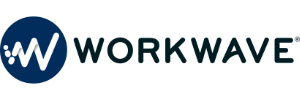Like any industry that calls for employees in the field, those in pest control face operational challenges daily. From coordinating schedules, technicians and materials needed for each job to ensuring consistent service delivery despite staffing variables, managing a pest control business’s operations is anything but simple. When something goes wrong, it can throw a wrench into the entire operation.
Picture this: A technician with a full day has to call out at the last minute. One of your vehicles breaks down unexpectedly. A service visit demands more time than originally allotted.
These situations represent common operational realities that pest control companies manage every day. A critical factor in preventing these situations from being full-blown dangers to your customer retention, though, is time.
Every minute between when an issue occurs and when your supervisors become aware of it allows problems to compound. What might start as a simple scheduling adjustment can escalate into callbacks, missed services and even customer churn if it takes too long to resolve.
That’s why reducing reaction time and moving toward proactive operations provides such value for pest control operators (PCOs). Real-time visibility into field operations enables companies to address developing situations before they endanger your customer satisfaction.
When Data Collection Becomes Decision Support
Real-time analytics takes operational and field data and uses it to fuel true business intelligence. Instead of simply tracking what happened and storing that data in disparate solutions, analytics platforms can turn that data into information, like identifying patterns that can help indicate what might happen next, and provide insights needed to prevent these problems from occurring in the future.
How Information Timing Affects Operations
Traditional workforce management software for pest control operations captures essential operational information: service completions, chemical and material usage, even employee locations if you’re taking advantage of telemetrics. This data serves important administrative functions and provides historical records for reporting, such as staying compliant with local chemical application standards, and helps you answer operational questions like: What does my staffing coverage look like? and How long did service delivery take?
Real-time analytics platforms build on this foundation by adding things like:
- Actionable insights that highlight optimization opportunities in operational data
- Enhanced reporting that provides deeper visibility into business performance
- Near real-time data processing that enables faster response to operational changes
This kind of visibility helps you answer more strategic questions, like: Which services might be expected to take longer than allotted? Where can you focus your sales efforts most effectively? What patterns predict potential callbacks or customer complaints before they occur?
Specific Applications in Pest Control
Demonstrating value to customers. Real-time analytics helps enable data-driven conversations with clients and internal optimization decisions. Here are a few use case examples:
- Live technician dashboard: Real-time data analysis tools could be used to break down technician performance as it occurs, flagging when they fall behind schedule before the problem leads to missed services.
- Avoiding over- or under-servicing: Gain deeper insight into jobs completed to analyze which technicians or locations are tied to consistent over- or under-servicing to ensure service agreements are honored.
- Providing consistent quality: Analyze callbacks and customer complaints to identify where issues might occur before they do, ensuring quality service and fewer issues
The Measurable Impact of Real-Time Intelligence
The fundamental shift from reactive to proactive operations begins when companies can identify developing issues while corrective action is still possible.
Historical data discovers problems after they’ve already impacted service delivery. Real-time analytics flip this timeline, providing immediate awareness that enables preventive responses rather than damage control. Companies that might have once lost significant time adjusting to unexpected technician issues on the fly could leverage real-time analytics to identify potential absences and arrange coverage before any service interruption occurs.
With a proactive mindset, PCOs could:
- Better pair technician skills, qualifications and equipment against service orders
- Adjust service priorities as conditions change
- Modify schedules based on immediate operational data
- Enable proactive cost management and restocking of materials through forecasting based on real-time information of job budget to actual data
Enhancing Your Existing Operations
Companies already using pest control management solutions like PestPac are perfectly positioned to add real-time analytics capabilities. Wavelytics builds directly on the operational data that PestPac already collects, enhancing routine data points into immediate business intelligence.
The entire PestPac database becomes available through Wavelytics Data Factory, with information formatted and curated for immediate use. This means companies can bypass extensive infrastructure setup and jump straight to gaining insights – giving you the information you need, fast.
Moving Beyond Reactive Operations
The pest control industry continues moving toward higher client expectations for proof of service, transparency, cost effectiveness and reliability. Companies that establish real-time analytical capabilities position themselves to meet these evolving demands while gaining operational advantages by building on powerful existing pest control technology and tools.
Are you ready to move from reactive to proactive operations? Contact us today to learn how.




